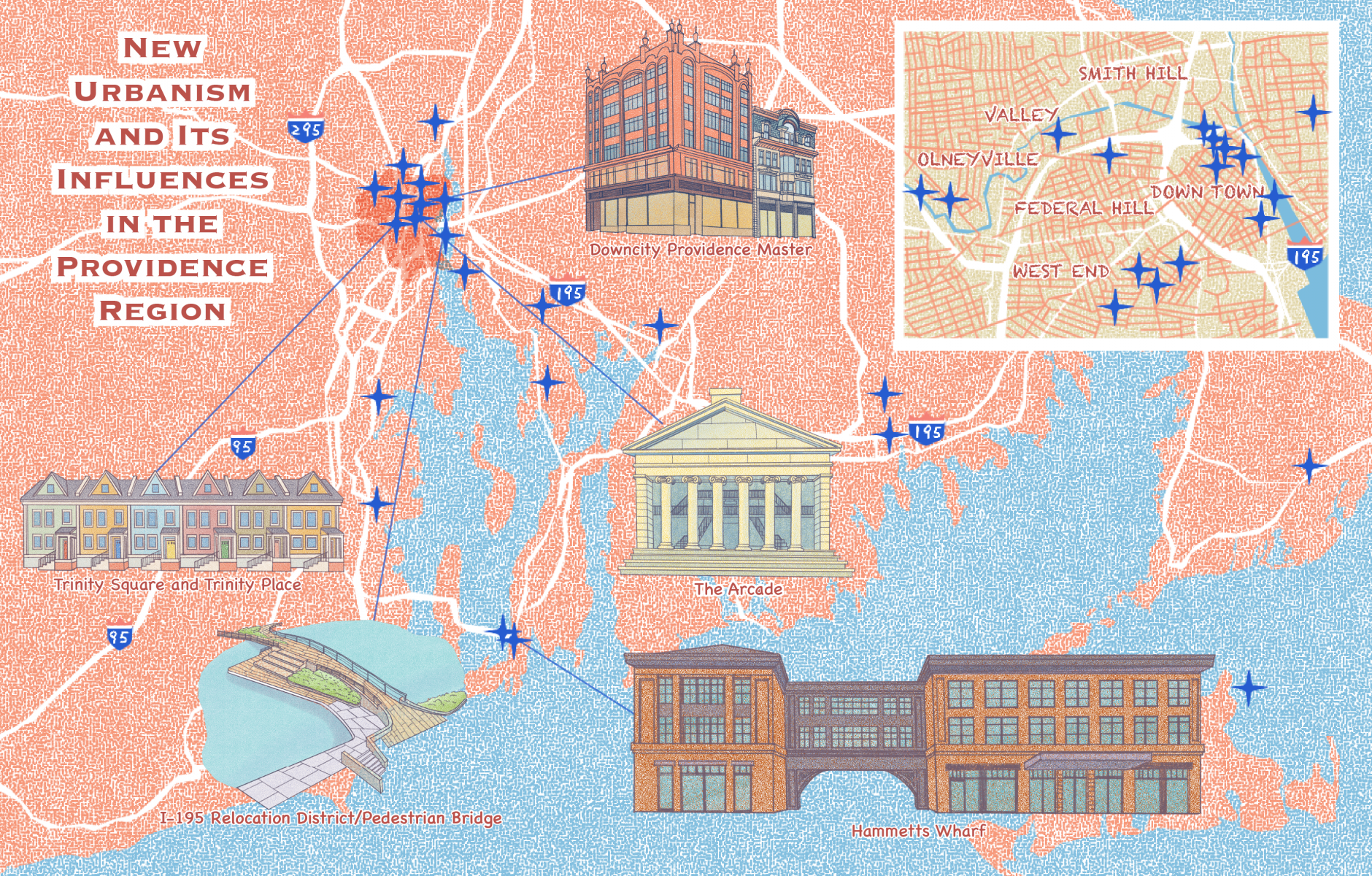
New Urbanism and Its Influences in Providence and New England
CNU created its annual map of New Urbanism and Its Influences in the host region of CNU 33 New England in Providence, Rhode Island, on June 11-14.
With the help of local urbanists, we identified more than 60 projects throughout the region with New Urbanism influence, including town centers, suburban retrofit, public housing redevelopments, mixed-use urban campuses, downtown revitalizations, infill developments, traditional neighborhood developments, missing middle housing, and more. See the Google Map below.
Few cities have been shaped more by New Urbanism than Providence. The compact city has great bones, including narrow, intimate streets downtown with excellent historic architecture that somehow survived urban renewal and parking regulations. But by 1990, much of downtown was vacant and lifeless, yet with tremendous potential.
Downcity, Providence’s downtown, benefited from an early new urbanist master plan published in Peter Katz’s seminal 1994 book, The New Urbanism. The Downcity Plan took a radically different approach from most downtown plans of the day, which tended to focus on “silver bullet” revitalization projects. Downcity instead called for incremental, mixed-use reuse of the city’s great building stock, along with targeted improvements to the public realm. After more than 30 years, Providence’s revitalization has been a resounding success and was recognized with a Charter Award in 2025.
Pivotal infrastructure projects transformed the city, including daylighting and redirecting rivers that had been capped over by 20th-century planning, restoring the city’s riverfront. Twelve bridges link Downcity to adjacent neighborhoods and areas like College Hill and the Providence Capital Center. Riverwalks, parks, and public spaces enhance the public realm. Also transformative was the relocation of I-195, and that shift reconnected downtown to the old Jewelry District. These new urban infrastructure projects have transformed the city in positive ways.
About an hour’s drive from Providence, in Mashpee on Cape Cod, is the nation’s first suburban retrofit. Mashpee Commons adapted and rebuilt a former strip mall into an urban center, starting in the late 1980s. Mashpee Commons is still a work in progress and the originally planned neighborhoods around the town center have yet to be built. Nevertheless, it is worth a visit and inspiring. Google calls Mashpee Commons a shopping mall, but it is more than that. It includes a public library, church, post office, residences, and civic spaces like a plaza and town green in about 12 blocks of mixed-use urbanism.
A little over an hour to the west, the main campus of UConn has an adjacent downtown that didn’t exist before. Storrs Center is a bustling 47-acre district of stores, services, and residences built around an active plaza/green across from the main campus.
About an hour north, the Boston region has incredible historic urbanism, not unlike Providence but on a larger scale. The city also has a wealth of new urban projects, including fine ensembles of contextual architecture recognized with Charter Awards in 2024, including Tremont Street in Mission Hill, and the Brookline High School campus.
These are just a few examples of New Urbanism and Its Influences in the Providence region and New England.




